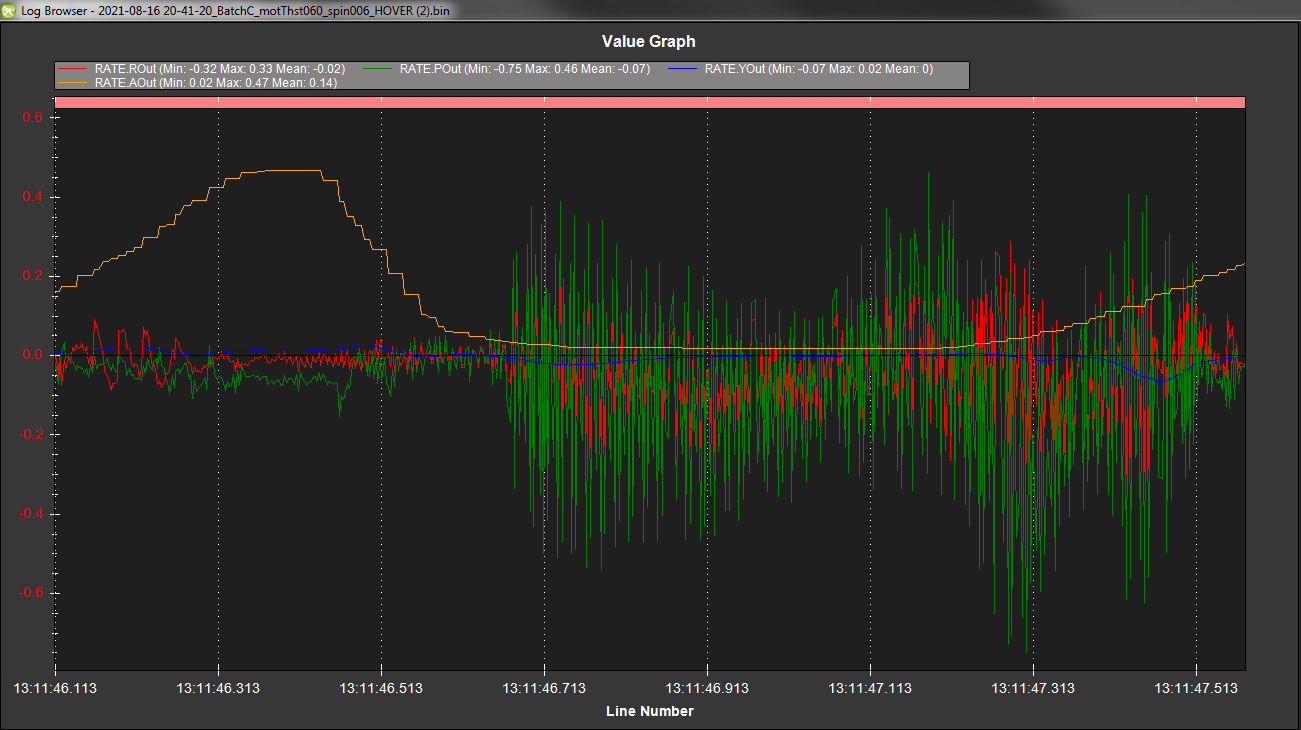Hi.
I’m have 7inch quad but i’m using 4s battery and not 6s as you…
I’m have some pids - maybe you can try and test and maybe this pids some help you -
ATC_ACCEL_P_MAX,150000
ATC_ACCEL_R_MAX,150000
ATC_ACCEL_Y_MAX,35000
ATC_ANG_PIT_P,15
ATC_ANG_RLL_P,15
ATC_ANG_YAW_P,7
ATC_ANGLE_BOOST,1
ATC_INPUT_TC,0.15
ATC_RAT_PIT_D,0.0018
ATC_RAT_PIT_FF,0
ATC_RAT_PIT_FLTD,70
ATC_RAT_PIT_FLTE,0
ATC_RAT_PIT_FLTT,70
ATC_RAT_PIT_I,0.18
ATC_RAT_PIT_IMAX,0.5
ATC_RAT_PIT_P,0.11
ATC_RAT_PIT_SMAX,0
ATC_RAT_RLL_D,0.0018
ATC_RAT_RLL_FF,0
ATC_RAT_RLL_FLTD,70
ATC_RAT_RLL_FLTE,0
ATC_RAT_RLL_FLTT,70
ATC_RAT_RLL_I,0.18
ATC_RAT_RLL_IMAX,0.5
ATC_RAT_RLL_P,0.11
ATC_RAT_RLL_SMAX,0
ATC_RAT_YAW_D,0
ATC_RAT_YAW_FF,0
ATC_RAT_YAW_FLTD,0
ATC_RAT_YAW_FLTE,5
ATC_RAT_YAW_FLTT,40
ATC_RAT_YAW_I,0.018
ATC_RAT_YAW_IMAX,0.5
ATC_RAT_YAW_P,0.18
INS_GYRO_FILTER,90
INS_FAST_SAMPLE,1
MOT_THST_EXPO,0.6
MOT_THST_HOVER,0.24
PSC_ACCZ_I,0.48
PSC_ACCZ_P,0.24
My copter setup:
t-motor f40 pro iii 1600kv
props 7042 gemfan flash
4s 6000 lipo
geprc crocodile 7 frame
full weight - 1.045kg
 I may go back to this and just do some hand-tuning of D (make it lower).
I may go back to this and just do some hand-tuning of D (make it lower). the implementations are very different and its not clear how scientific betaflight’s approach is.
the implementations are very different and its not clear how scientific betaflight’s approach is. Unfortunately signals and systems wasn’t one of my focus points but it’s definitely interesting
Unfortunately signals and systems wasn’t one of my focus points but it’s definitely interesting 

